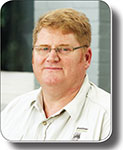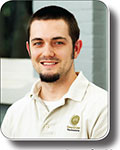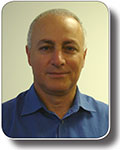Drilling success as a result of probabilistic lithology and fluid prediction—a case study in the Carnarvon Basin, WA
Matthew Lamont A , Troy Thompson A and Carlo Bevilacqua BA DownUnder GeoSolutions
B Apache Energy
The APPEA Journal 48(1) 31-42 https://doi.org/10.1071/AJ07004
Published: 2008
Abstract
The aim of quantitative interpretation (QI) is to predict lithology and fluid content away from the well bore. This process should make use of all available data, not well and seismic data in isolation. Geological insight contributes to the selection of meaningful seismic attributes and the derivation of valid inversion products. Uncertainty must be taken into account at all stages to permit risk assessment and foster confidence in the predictions. The use of the Bayesian framework enables prior knowledge, such as a geological model, to be incorporated into a probabilistic prediction, which captures uncertainty and quantifies risk.
Nostradamus is a fluid and lithology prediction toolkit that forms part of a comprehensive QI workflow. It utilises a Bayesian classification scheme to make quantitative predictions based upon inverted seismic data and depth-dependent, stochastic rock physics models. The process generates lithology and fluid probability volumes. All available information is combined using geological knowledge to create a realistic pre-drill model. Separately, stochastically modelled multidimensional crossplots, which account for the uncertainty in the rock and fluid properties (based on petrophysical analyses of well data), are used to build probability density functions such as acoustic impedance (AI) vs Vp/Vs and LambdaRho vs MuRho. These are then compared to crossplots of equivalent inverted data to make predictions and quantitatively update the geological model. Individual probability volumes as well as a most-likely lithology and fluid volume are generated. This paper presents a case study in the Carnarvon Basin that successfully predicts fluids and lithologies away from well control in a way that effectively quantifies risk and reserves. Two of the three successful gas exploration wells were drilled close to dry holes.

Matthew Lamont’s academic qualifications culminated in a Ph.D. in Geophysics from Curtin University of Technology. His first class honours discertation was on seismic stratigraphy and his Ph.D. topic was seismic multiples. He is an adjunct associate professor at Curtin University. His working career spans over 15 years including working in Woodsides geophysics group performing depth migrations and depth conversions. He worked for BHPB as the seismic processing and imaging technical lead in Houston. Back in Australia with BHPB he worked in the quantitative interpretation area in addition to processing and imaging. Matthew started DownUnder GeoSolutions in 2003. He continued with depth imaging, reflection tomography, depth conversion and quantitative interpretation research and application. Matthew was the ASEG distinguished lecturer in 2005. The subject of the talk and paper was spectral decomposition. Member: ASEG, SEG, EAGE, APPEA and PESA mattl@dugeo.com |

Troy Thompson received a PhD from Curtin University of Techonology. His topic was automated prestack event picking. He received a first class honours degree at Curtin working on anisotropy. Troy was a founding partner in DownUnder GeoSolutions. Today he is a principal geophysicist, managing the QI services division, and a director of DownUnder. He has written papers on a variety of subjects including anisotropy, prestack autopicking and quantitative interpretation. Member: ASEG, SEG, EAGE and PESA. troyt@dugeo.com |

Carlo Bevilacqua graduated in 1979 from the West Australian Institute Of Technology with a Bachelor of Applied Science (Physics). After two years of seismic acquisition and processing with Geophysical Services Inc in Perth he joined Oil Company of Australia in Sydney. Carlo then joined LASMO Energy as a staff geophysicist in Brisbane, and relocated to London and Rome. In 1990 Carlo joined Enterprise Oil where he worked in serveral positions including Chief Geophysicist (Rome), Team Leader Southern North Sea (London) and International Exploration Coordinator (London). Carlo joined Apache in 1999 in Perth where he works as a senior geophysical advisor. Member: ASEG, SEG, EAGE, APPEA and PESA carlo.bevilacqua@ausapachecorp.com |


